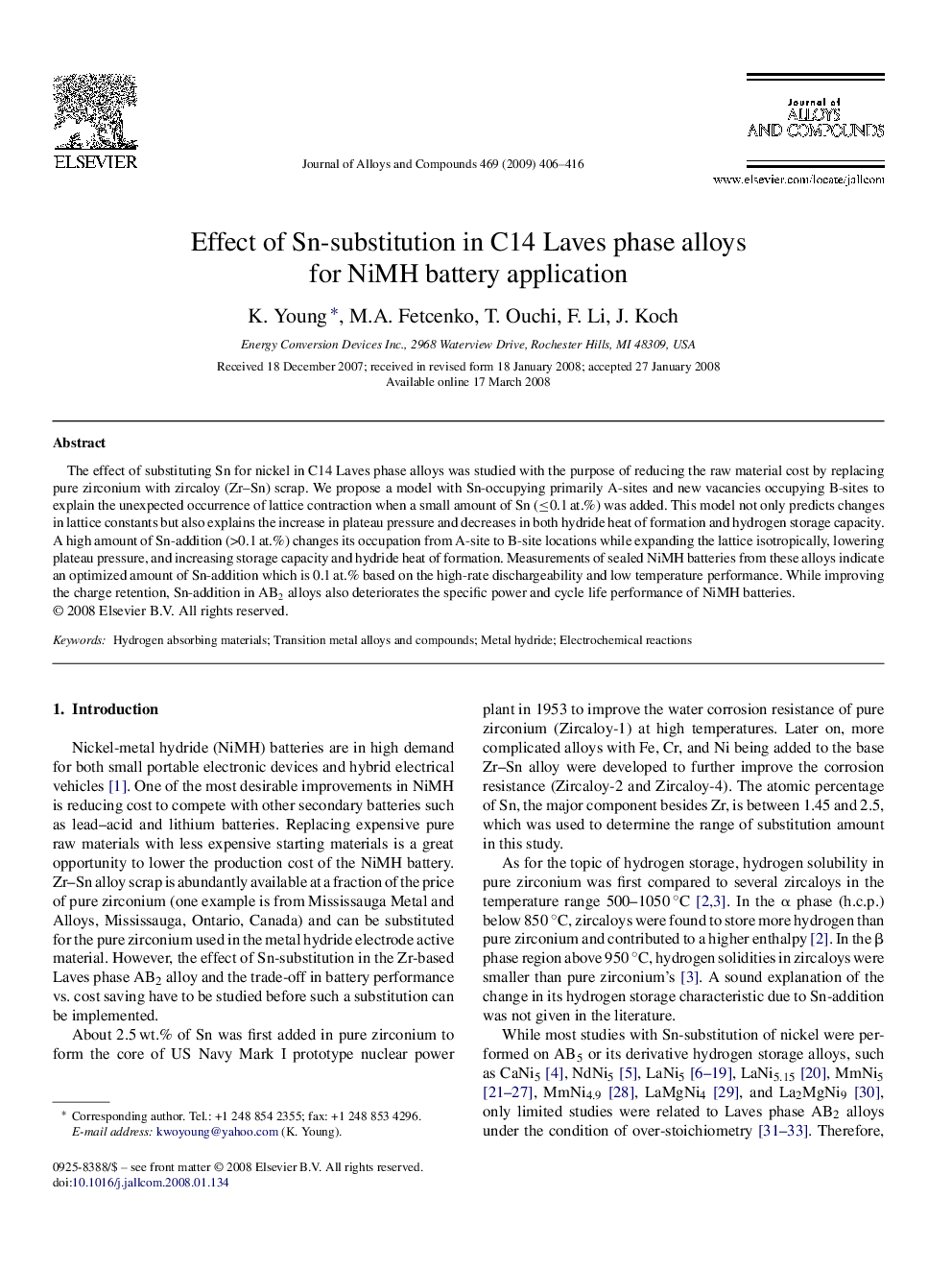| Article ID | Journal | Published Year | Pages | File Type |
|---|---|---|---|---|
| 1623294 | Journal of Alloys and Compounds | 2009 | 11 Pages |
Abstract
The effect of substituting Sn for nickel in C14 Laves phase alloys was studied with the purpose of reducing the raw material cost by replacing pure zirconium with zircaloy (Zr-Sn) scrap. We propose a model with Sn-occupying primarily A-sites and new vacancies occupying B-sites to explain the unexpected occurrence of lattice contraction when a small amount of Sn (â¤0.1 at.%) was added. This model not only predicts changes in lattice constants but also explains the increase in plateau pressure and decreases in both hydride heat of formation and hydrogen storage capacity. A high amount of Sn-addition (>0.1 at.%) changes its occupation from A-site to B-site locations while expanding the lattice isotropically, lowering plateau pressure, and increasing storage capacity and hydride heat of formation. Measurements of sealed NiMH batteries from these alloys indicate an optimized amount of Sn-addition which is 0.1 at.% based on the high-rate dischargeability and low temperature performance. While improving the charge retention, Sn-addition in AB2 alloys also deteriorates the specific power and cycle life performance of NiMH batteries.
Keywords
Related Topics
Physical Sciences and Engineering
Materials Science
Metals and Alloys
Authors
K. Young, M.A. Fetcenko, T. Ouchi, F. Li, J. Koch,
